ÖTILLÖ’s Fearless Founders
Mats Skott and Michael Lemmel have evolved what started as a drinking bet amongst four of their Swedish friends into an expanding global World Series. With the 11th edition of the ÖTILLÖ World Championship only a few months away on Monday, September 4th in the Stockholm archipelago, we sat down with the founders of Swimrun to get a midseason report of sorts.
Slowtwitch: The ÖTILLÖ World Series is now past the midpoint of the season. Can you share with us some of your takeaways from Hvar, Utö, Isles of Scilly and Engadin? What have been the most under appreciated stories of the year so far from your perspective?
Mats Skott: It has been a fantastic Spring with four race weekends and a lot of new Swimrunnners, which we think is fantastic. The World Series races have shown us that racing in nature is so much fun and you need to be prepared for all types of conditions. From a flat sea with hardly any current in the Isles of Scilly, a place that normally has a lot of currents and waves, to Hvar that normally is flat sea with good visibility showed as another scenario on race day with very strong winds and currents. But this is Swimrun and you need to be prepared when you go out in nature.
The most under appreciated story is the Sprint races that are a shorter version and have winning times between 1.5 to 2 hours with the last teams racing for about 4 hours. The joy and happiness we see that the racers have along the race and at the finish line is fantastic. The Sprint races are such a great race as it is a challenge for the very elite and it is a doable challenge for someone that has only trained for Swimrun for a few months. The Sprints are the new black.
Michael Lemmel: The most interesting story from our perspective is the fact that the Swedish Ministry of Foreign Affairs is promoting ÖTILLÖ as one of Sweden’s many innovations and also our stand on trying to raise awareness around #SaveOurOcean.
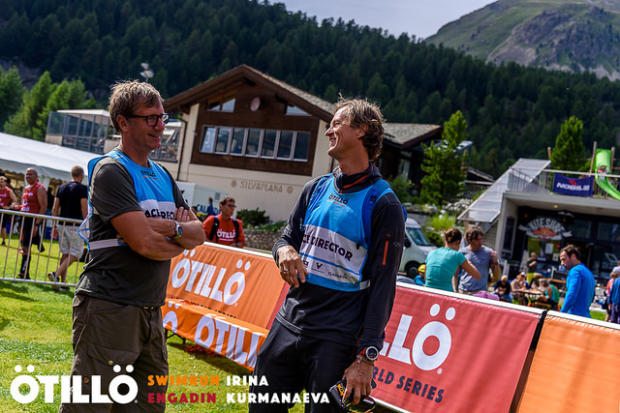
ST: What countries are you seeing the best participation from at your races? Where is Swimrun exploding?
Michael: Sweden is still the country with the most amount of Swimrun. However we see strong growth in the following countries when looking at where our participants come from. The top four with the biggest amount of teams are: Sweden, UK, France and Germany. We believe that the big boom will be in 2019 – 2022.
ST: Hvar, Croatia was a new race venue this year. What attributes make this course desirable or worthy of a challenge for athletes to consider? What did athletes who raced it this year say they liked about it?
Mats: ÖTILLÖ Hvar is a fantastic race location. Being in this antique town, in the middle of the Adriatic in the off-season is a privilege. The water is absolutely crystal-clear and you get a sensation of flying while swimming. The terrain is everything but flat, some incredible single track, some very hard trail runs and fantastic views all around. The course is hard and beautiful. This year we got huge amounts of wind and the long swim (3 km) was very difficult with big waves, current and so on. Only 50% of the field managed to finish due to the stormy conditions. This is part of the pleasure and pain of Swimrun; nature dictates the terms and we have to have the skill sets to adapt. It showed how important it is to train in difficult conditions and that being fast in a pool or in flat waters has nothing to do with when it gets rough. Some teams thought that the time limits cut-offs were too hard and not adjusted to the conditions. Next year we believe we all have learned and we look forward to a full field and more than 80% finishes.
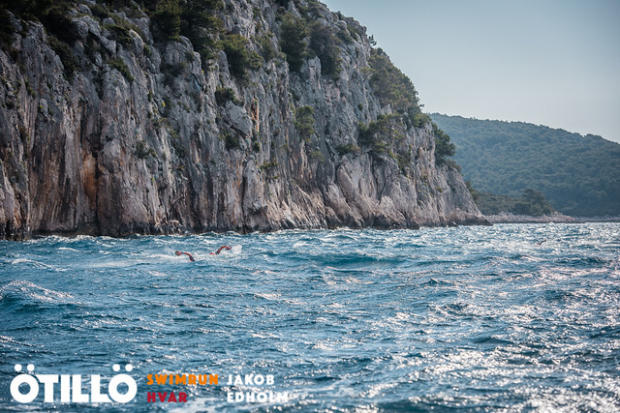
ST: An athlete must be well trained and prepared to complete one of your races. Each race producer has their own opinions on how to design a course. What is ÖTILLÖ’s preference? Is there ever a scenario when you are designing the course where you choose to take an easier route or do you typically defer to the most challenging route?
Mats: We want to use the most natural route. We do not look at the challenge unless we see it as too difficult. We want to create a good flow in the course. The primary objective is to create fantastic experiences for the racers.
ST: ÖTILLÖ Engadin looked to have the largest field of racers we have seen at one of your races to date with over 150 teams. How do you determine where to cap your field size when demand is high?
Michael: At Utö we had 300 teams in the World Series event. So that was the largest to date.
We want to create personal races. We have some courses that can swallow up to 350 teams. That is our top limit. Each event we want to grow in a sustainable manner so that we increase the amount of teams gradually so we continue delivering a fantastic experience at the same time as we want it to feel wild. Never that you feel crowded.
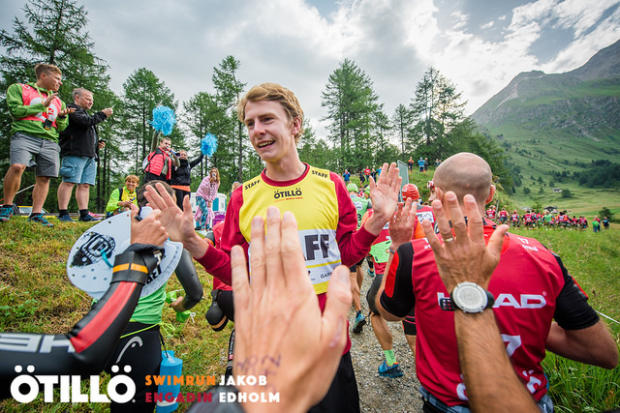
ST: At the beginning of the season a grand prize of 1 million Swedish Krona (~$100,00 US) was announced if one team, irregardless of gender or racing category, could win all of the seven ÖTILLÖ World Series races.
Mats: The 1 million SEK Golden Jersey Challenge was a very good start to a good project. It will most certainly come back in a modified version.
ST: In what ways do you foresee the Golden Jersey Challenge being modified in the future?
Michael: That we cannot tell until we release it.
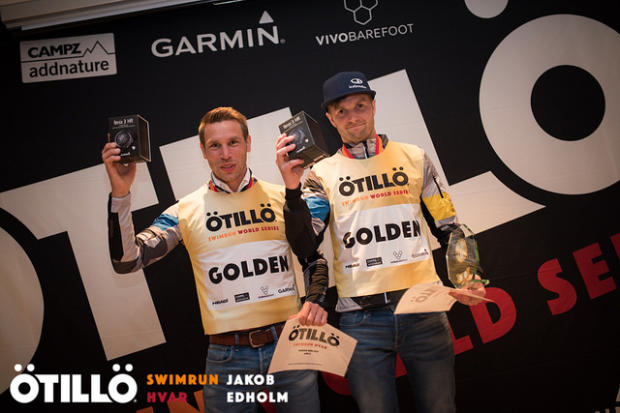
ST: Year over year, are you noticing trends in the gear and equipment racers are using for your ÖTILLÖ events? Is the combination of wetsuit, paddles, pull buoy and lightweight trail shoes still the standard fare for most racers? Which companies are leading the way with introducing new gear?
Mats: We have seen the gear is being more and more specific and slimmed, but it seems to be a very popular combination with wetsuit, paddles, pull buoy and lightweight trail shoes. Regarding the gear you have HEAD leading the way in all the swimming gear with a lot of different wetsuits that fit all conditions and are very nice to run in. Garmin with their special Swimrun app that you can measure your training sessions with the Fenix 5 watch, so you can improve your performance. Then we have Vivobarefoot shoes that have developed a true Swimrun shoe that is minimalistic, super good fit and the shape of the shoe is great even wet. Their orange sole makes it really easy to follow your teammate in the swim sections.
ST: For those athletes who are coming over from multisport backgrounds who typically race in a lightweight trainer or racer why should they consider using a shoe specially designed for Swimrun? Same general question for a standard open water wetsuit versus one specialized for Swimrun?
Mats: People should race in the shoes they are used to using. Shoes and feet are very individual. The possible advantage with specially designed shoes are they drain quickly and have a good grip when wet. When it comes to wetsuits the difference is apparent. Swimrun wetsuits are designed to be able to run in and also for the ease of opening them up.
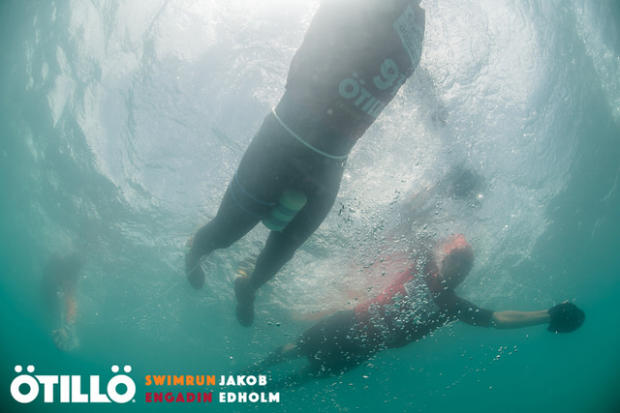
ST: Last Fall ÖTILLÖ partnered with Xtreme Norseman. Can you tell us about any of the projects you are working on and what you have found so far?
Michael: The project with Norseman is a long-term project of information-sharing and supporting each other. As you might have noticed, Norseman has re-launched the Xtri Scene with a Xtri World Tour which is a direct effect of our info sharing. We, on the other-hand, have started a cold-water research project with a team that has been involved with Norseman for a while. There will be more things that will happen in this alignment moving forward.
ST: You have some cold water in most of your races. The Baltic in May for Üto must be quite cold. Same for the alpine lakes at Engadin and some of the swims in September at ÖTILLÖ. Low 50’s. Even high 40’s in some stretches. Norseman water temperature is also typically low 50’s. What are some of the questions the cold-water project is trying to uncover?
Michael: We want to know how cold water affects you and the energy consumption required. How long it takes for the core body temperature to warm up.
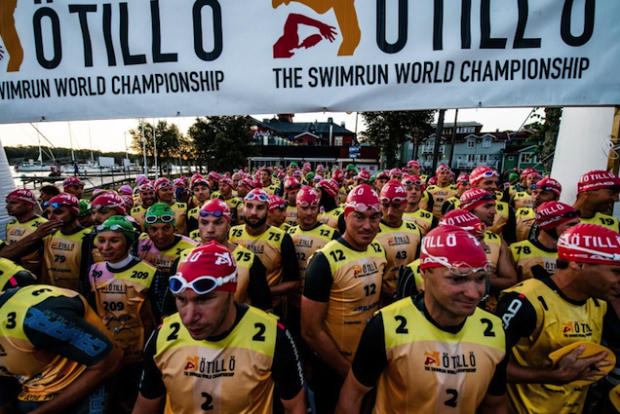
ST: There has been a big push this year by ÖTILLÖ to share the story of how the event was born out of a drinking bet amongst four friends. Was this the impetus for you to launch a sports betting collaborative? How has participation with this been received so far?
Michael: We would not call it a big push. The importance is to share that ÖTILLÖ and swimrun comes from a real story and that it was not constructed.
ST: Do you envision the ÖTILLÖ World Championship will always be staged in the Stockholm Archipelago or would you consider moving a championship race to other venues around the world. Still keeping the original ÖTILLÖ on the race schedule, just not with the World Championship title?
Michael: Our vision is to keep the ÖTILLÖ World Championship on the original course, but what the distance future holds we do not know.
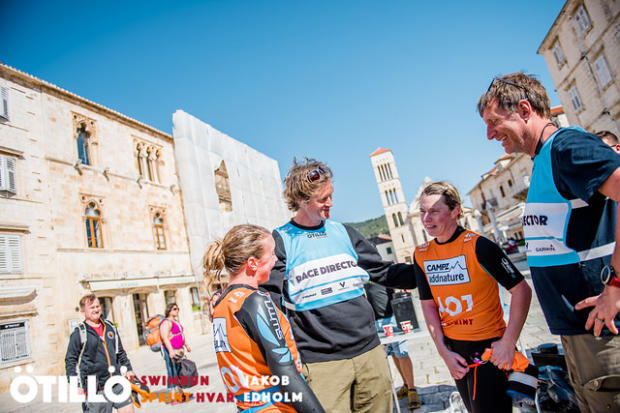
ST: We see there is an unannounced race slated for November 2017. Is there anything you can tell us about that?
Michael: No not at the moment but will let you know as soon as we can.
ST: We understand you were able to finally participate yourself in a Swimrun event. What was the experience you had as a racer?
Michael: Since a couple of years I try to do at least one Swimrun event per year within our ÖTILLÖ Merit Race group. To get a feel for the racer experience, the organization and also things that we can pick up and learn. I love it. To go away to a race and only think of my and my teammates experience is very nice when I usually have another role. The sport and practice of Swimrun is magical, but that I already know from all the Swimrun exploring we do!
You can follow ÖTILLÖ on Twitter via @otillorace


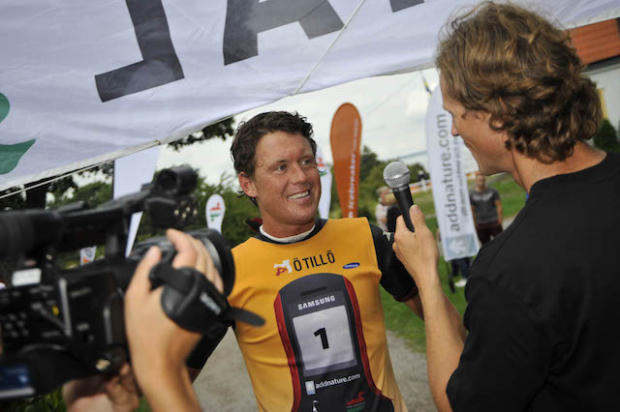
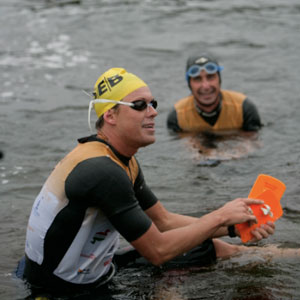
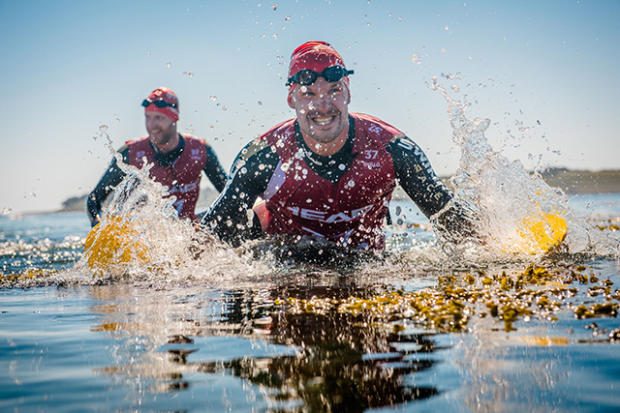
Start the discussion at slowtwitch.northend.network